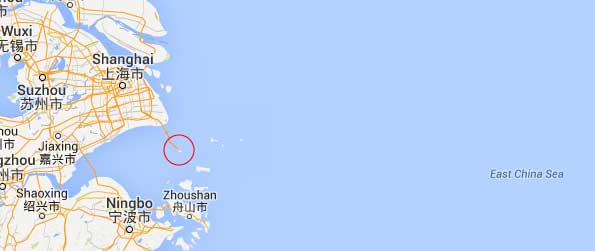1. General Information
Name of the testbed: e-Yangshan Port
Location: East China Sea, Shanghai region, China
Duration: January 2014 – June 2016
Status: Ongoing
Contact: Liang Zhang, roadman9999@126.com, Supervisor of radio navigation East China Sea, East China sea navigation guarantee center, China MSA
Testbed website: www.e-nic.cn
Initial Organisations: China MSA, Jimei University of China
Initial funding: 20 million CNY

2. Executive summary
Importance of yangshan port
Development of port and shipping economic of yangshan port has become an important support to deepen national strategy. It is the biggest artificial deep-water port. The volumes of containers has accounted for nearly half the total number in Shanghai port
Unfavorable factors in sailing
Only the annual average economic benefit impact of port production enterprise is as high as 640 million yuan due to poor visibility caused the ship grounded or dredge. Surrounding is fishing grounds and the port is located in the north-south intersection route of coastal seaborne artery, forming, medium and small vessels and fishing boats gathered water traffic intersection area, in which has a high frequency for water accident. This puts forward new challenge to maritime security.
Purposes of construction
Improve navigational safety guarantee system in poor visibility. Provide comprehensive, timely, reliable and efficient navigation information and facility Services for vessels
lProvide a comprehensive support service platform for command scheduling management. As a information sharing, survival and relying on platform of comprehensive business management such as shipping companies, ports, freight forwarders, logistics and so on
3. Testbed Information
The type of user group/s involved in the test
Shipboard users
Shore-based users
Details of e-Navigation gap/s considered for the testbed
Information/data management
Effective and robust voice communication and data transfer
Systems and equipment
Ship reporting
Traffic monitoring; and/or
Training and familiarization
The category of e-navigation gap/s considered in the testbed
Technical
Operational
Details of e-navigation solution/s considered in the testbed
S2: Means for standardized and automated reporting
S3: Improved reliability, resilience and integrity of bridge equipment and navigation information
S4: Integration and presentation of available information in graphical displays received via communication equipment
S9: Improved Communication of VTS Service Portfolio
The category of e-navigation solution/s considered in the testbed
Technical
Regulatory
Operational
Links to similar / relevant testbeds
ACCSEAS, EfficienSea
4. Testbed methodology
Methodology used for data collection
Under construction
Summary information on testbed respondents / participants
To be presented
5. Testbed results
Summary of findings
To be presented
6. Conclusions and recommendations
Conclusions
To be presented
Recommendations
To be presented
7. Publications
To be presented
8. Reference material
PowerPoint Presentation of Yangshan Port e-NAV testbed
Link to further information: here


